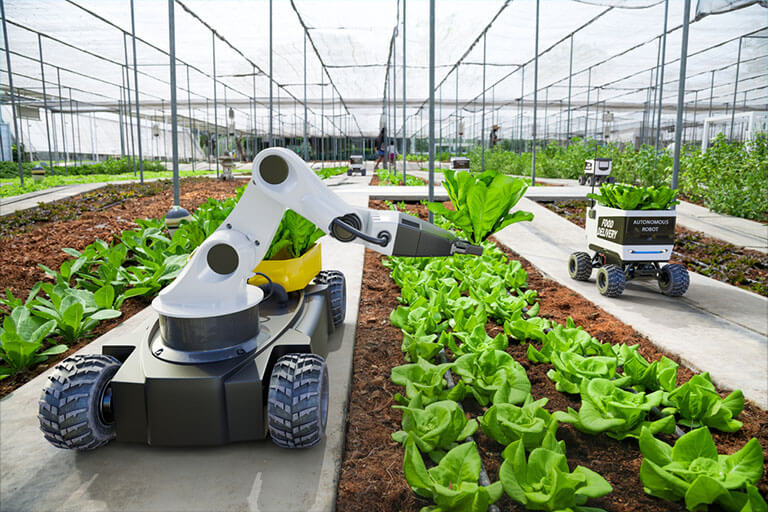 I had the chance to visit Raleigh, NC, this past week and get to talk to some fantastic people working in the agriculture space. It was an opportunity to compare and contrast agricultural concerns and options in the southeastern part of the US with what I’ve interacted with in the Pacific Northwest.
I had the chance to visit Raleigh, NC, this past week and get to talk to some fantastic people working in the agriculture space. It was an opportunity to compare and contrast agricultural concerns and options in the southeastern part of the US with what I’ve interacted with in the Pacific Northwest.
There were some big differences around areas like water rights (down in NC, there isn’t a concern about water like there is on the west coast) and commodities, of course which are going to shift depending on what part of the US you’re in. Down in North Carolina, you have sweet potatoes as the leading crop, with crops like tobacco and peanuts making up the landscape of a state with 90 commodities being grown vs. apples dominating the scene in Washington, along with cherries, dairy, and hops which grow around 300 commodities total.
There were a good deal of common concerns, though, with one, in particular leading to the writing of this article.
Speaking with Paul Ulanch with the North Carolina Biotechnology Center, based in the Raleigh-Durham area (aka the “Research Triangle”), we talked about the difficulty of getting large-scale agriculture technologies built for well-capitalized farms to scale down to small farms that don’t have nearly the complexity, capital, or manpower that larger farms have. The average farm in NC is around 184 acres, which is similar in size to farms on the west side of Washington state vs. Eastern Washington, which is made up of larger specialty crop farms along with several traditional “broadacre” crops as you go further east of the state.
That discussion stuck with me throughout the rest of the week, as I talked to agricultural experts in a variety of capacities, from investment to public policy, around how innovation can get commoditized over time to lower the cost of entry for a small farm as the technology is adopted and streamlined across regions of the world and different commodity types. I recall a conversation with the UN FAO (Food and Agriculture Organization) in the context of building a “digital agronomist” with experts here in Central Washington that could then work its way over to small sustenance farms in Africa that could aid in basic farming practices to solve problems that every farm encounters regardless of the crop or size such as irrigation planning or combating pest pressure.
There is no doubt, several hurdles, depending on the type of AgTech company you are, to scale across regions, commodities, and farm sizes while staying true to your growth targets and budgets, but as Carter Williams, the CEO of iSelectFund would say, Innovation is deflationary meaning that innovation in a given industry can bring costs down over time if the right innovations work to make things of higher quality (like healthy food) more affordable to a larger group of people without sacrificing on the quality itself.
How could an AgTech company build a high-quality instrument for large-scale farms then and work to make that same instrument available to farms on a by-acre pricing model so that the business can hit its revenue targets while also making the product cost affordable to any sized farm? There’s innovation here that needs to take place, to make this kind of model the norm, I think. It’s hard to imagine how some AgTech solutions, such as robotic sprayers, would ever be low-cost enough for a 10-acre farm in a third-world country. Still, it could be a business model innovation such as an AgTech “co-op” that makes one machine scalable to several dozen farms in a given area.
Other solutions, such as automated irrigation management, might not be cost-effective at a farm below a particular scale. Still, the intelligence within that solution being made available via a smart-phone enabled irrigation calculator could be the scalable version from an IoT-enabled intelligent irrigation management system down to just calculating evapotranspiration and pump specifics to get a recommended schedule to implement yourself.
Suppose every AgTech company made the goal to build towards an “accessible at any size” model though as the company matured and thought more about tiers of offerings/services – from the large-scale commercial operations down to the 10-acre sustenance farm, whether it’s different offerings or solutions that get more complicated based on the size/appetite of the farm. Could it help improve technology diffusion across farming globally at a time when every farmer is getting hit harder by adverse weather, global unrest, and increasing costs from inputs to labor?
Having the bandwidth to develop this kind of variety into your offering requires a certain level of size/success in the marketplace / available budget / etc., which isn’t possible for a great many AgTech companies today of course, and a number of specific technologies couldn’t possibly scale as is to farms below a certain size. I think as a critical component in the agricultural value chain, though, we should think and talk more about what scaling down to a farm of any size could look like and work to make innovation and optimization something every farmer globally could someday take advantage of.
I think the problems facing farmers aren’t going to lessen over time, and in some areas of the world, these local farms are largely what keep local communities fed, which are the same farms that can’t necessarily afford costly adoption cycles for cutting-edge agtech solutions so it’s a great opportunity to think about what different go-to-market models could look like. This, too, could serve as a unifying opportunity to bring AgTech companies together across regions and commodities (which are pretty fractured across the agricultural ecosystem) and break through some stubborn barriers around technology adoption across agriculture.
















